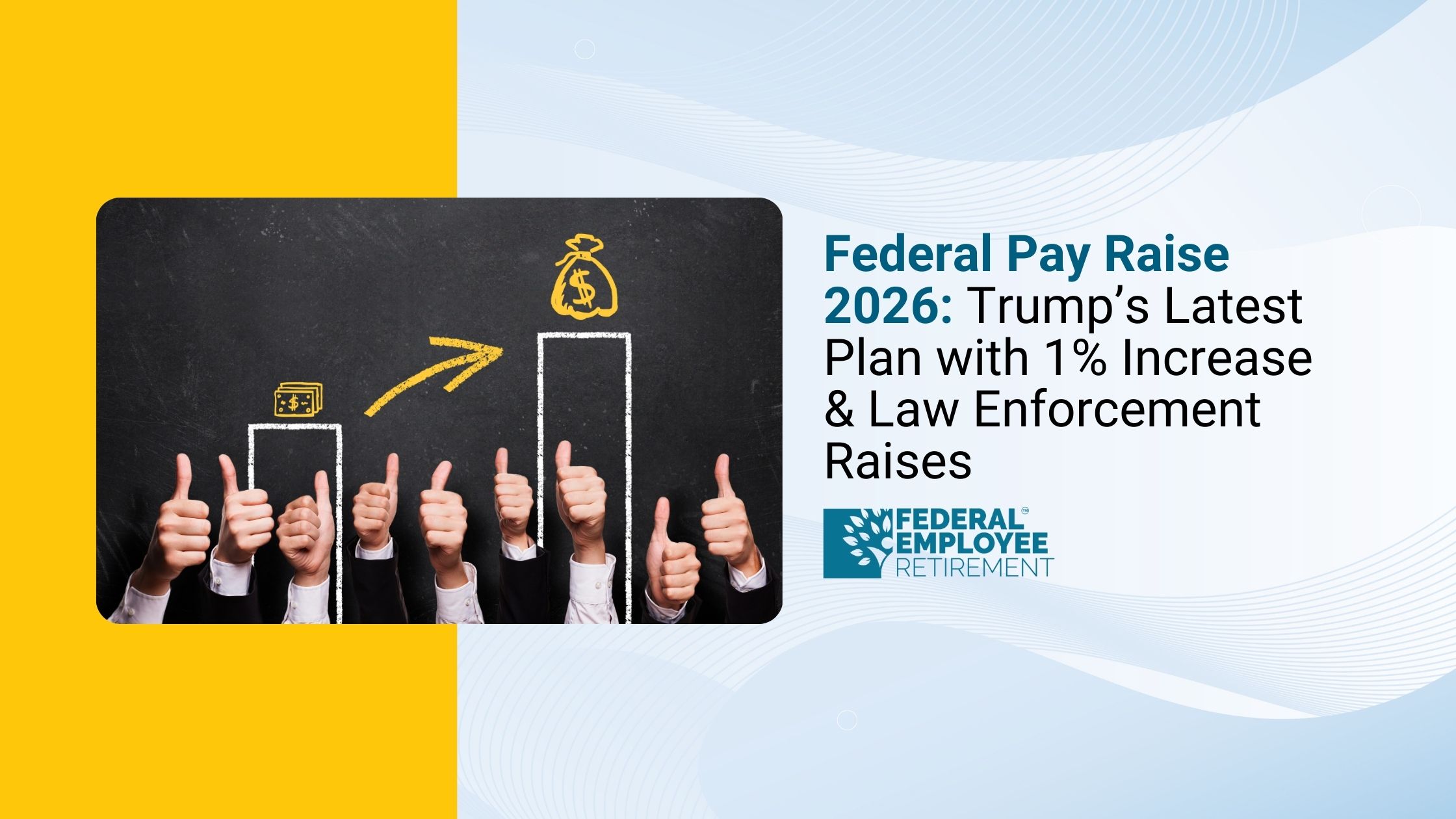You’re not alone; 4,359 federal employees booked their free review.

Federal Pay Raise 2026: Trump’s Latest Plan with 1% Increase & Law Enforcement Raises
Federal employees across the nation are closely watching the developments around the federal pay raise for 2026. The latest update from the White House, transmitted quietly to Congress on August 28, 2025, outlines a modest increase in pay for most civilian federal workers but a notably higher raise for certain federal law enforcement officers. Here’s the full breakdown of what to expect and what it means for federal employees in 2026.
What Is the 2026 Federal Pay Raise?
President Donald Trump has proposed an alternative pay plan for 2026 that includes a 1% base pay increase for most civilian federal employees. This pay raise is the smallest since 2021, when President Trump also issued a 1% raise during his last year in office.
Notably, locality pay adjustments will be frozen in 2026, meaning that while base pay rises slightly, cost-of-living differentials based on geographic areas will remain flat. This has a significant impact on total compensation, especially in high-cost areas.
A Separate Raise for Federal Law Enforcement Officers
In a distinct move, President Trump’s plan calls for a 3.8% base pay increase for certain categories of federal law enforcement personnel. This raise is intended to match the pay increase expected for military members in 2026 and aims to support recruitment and retention in critical law enforcement roles.
The Office of Personnel Management (OPM) will consult with federal agencies to identify which law enforcement categories qualify for this higher increase, with consultations starting on September 2, 2025.
Why the Alternative Pay Plan?
Federal employee pay adjustments are guided by the Federal Employees Pay Comparability Act (FEPCA), which typically mandates base pay increases plus locality adjustments in line with private sector wage growth. However, annual deviations through alternative pay plans have been common for decades to help control federal spending.
Without this alternative pay plan, 2026 would have seen an average locality pay increase of 18.88%, plus a 3.3% across-the-board base pay raise a potentially unsustainable cost estimated at $24 billion for the government.
President Trump emphasized fiscal responsibility in his August 28 notice to Congress, stating:
“Federal employee pay must be based on merit and practical skill and aligned with the budget and my administration's goals of streamlining the federal workforce and reducing federal spending.”
How Does the 2026 Raise Compare Historically?
- The 1% raise for 2026 marks a continuation of historically low increases, with larger pay raises in recent years:
- 2.7% in 2022
- 4.6% in 2023
- 5.2% in 2024
- 2% in 2025
- Before 2021, the last time federal employees received a raise at or below 1% was in 2015.
- Historically, Congress has overridden presidential pay freeze proposals multiple times, though political and budgetary circumstances dictate outcomes each year.
What Do Unions Say About the 2026 Raise?
The National Treasury Employees Union (NTEU) criticized the proposed 1% raise as inadequate, highlighting a continuing pay gap between federal and private-sector workers of approximately 24.72%.
NTEU President Doreen Greenwald stated:
“At the very least, the planned 3.8% average increase for military and federal law enforcement should be extended to all federal employees. We continue to urge Congress to provide a fair increase for the entire federal workforce.”
The 2026 federal pay raise is set and most employees may only see a 1% boost while law enforcement gets more. Don’t wait until December’s executive order; understand now how this impacts your pay and retirement
What’s Next? Executive Orders and Congressional Action
While the alternative pay plan letter sets the framework, the raise is not final until President Trump signs an executive order, expected in late December 2025. Moreover, Congress has the power to override the president’s plan through appropriations legislation, though so far no competing pay raise proposals have gained traction.
Federal employees are advised to stay informed and monitor announcements as fiscal year 2026 approaches.
Frequently Asked Questions (FAQs)
Will federal employees definitely get a 1% raise in 2026?
As of now, the president’s alternative pay plan proposes 1%, but final approval depends on executive orders and possible congressional actions.
Which federal law enforcement officers qualify for the 3.8% raise?
The OPM is consulting with agencies to determine which categories qualify, focusing on supporting recruitment and retention in critical roles.
Why is locality pay frozen for 2026?
Freezing locality pay helps control budgetary costs, as increases following FEPCA formulas would have led to nearly 19% locality pay hikes, which are considered fiscally unsustainable.
How does this pay raise compare to private sector increases?
Federal raises have consistently lagged behind private sector wage growth, contributing to an estimated pay gap of over 24%.
Conclusion
The 2026 federal pay raise signals a restrained increase for most federal employees, with a notable exception for federal law enforcement personnel receiving a larger boost. The alternative pay plan approach reflects ongoing budget priorities and workforce management goals by the administration.
Federal workers should plan accordingly and keep abreast of updates as the executive order and congressional deliberations unfold. For detailed guidance on how these changes affect your specific position and retirement planning, consulting with a federal retirement expert is recommended.


Get Updated
Subscribe to our weekly updates for the latest on retirement planning, federal benefits, exclusive webinars, and more!
Download Federal Retirement: Step-by-step Checklist
This comprehensive guide will help you understand your federal benefits, optimize your savings, and plan for a comfortable future.



.png)








